Installing OCS 2007 R2 to a Named Instance of SQL on a Dynamic Port
Note: The article below should be taken as an example of what is possible and is not necessarily representative of a supported solution. Please verify that this is a supported solution before implementing in a production environment.
I was testing a scenario where I needed to install OCS onto a named instance of SQL where the SQL Browser service wasn't running, and couldn't be turned on. Mike Atkins posted a great article on some solutions to this problem (https://communicationsserverteam.com/archive/2009/04/16/430.aspx), but I wanted to see if there was another way to get the databases installed. Without make any changes, just entering the SQL server and instance into the create pool wizard will return the following error:
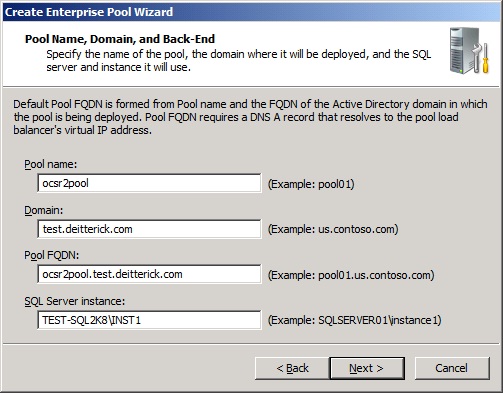
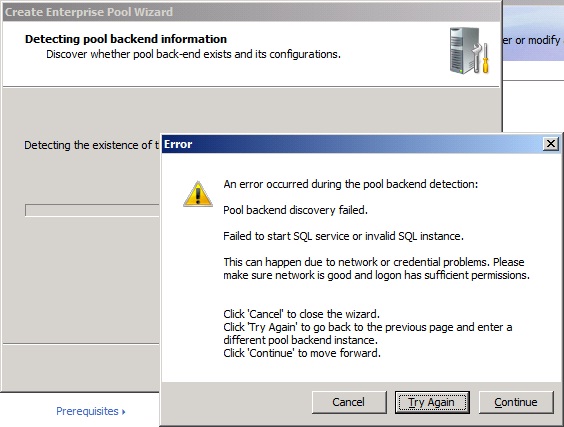
In this case, the OCS server can't find the INST1 instance on the SQL server. This is because I have the SQL Browser service stopped and the instance is using a non-standard port, 64713 in this case. You can use SQL Server Configuration Manager to find what port your instance is listening on. If you expand SQL Server Network Configuration > Protocols for <Instance> > TCP/IP. On the IP Addresses tab you can find the port listed under TCP Dynamic Ports.

Back on the create pool wizard specifying the server in the format of <SQL Server>\<Instance>,<Port> the wizard will try to connect to the SQL server using the port specified.
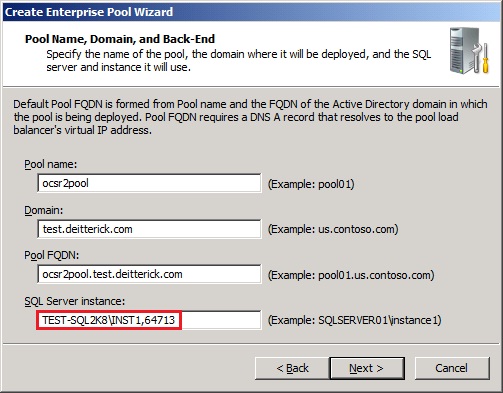
After clicking on next, if you're successful, you should see the next screen for entering the web farm FQDNs.
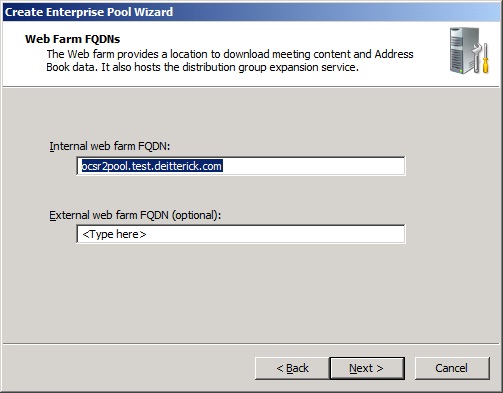
You will also notice that on the database tab of the pool, you will see the SQL server listed with the port as well.

One other place that this comes in handy is when trying to use the Resource Kit tools to query against the database. You can add the port to the end of the /sqlserver parameter in DBAnanlyze in order to connect successfully:
DBAnalyze.exe /report:diag /sqlserver:TEST-SQL2K8\INST1,64713
Also, you can use the same format when using Snooper to query for reports:
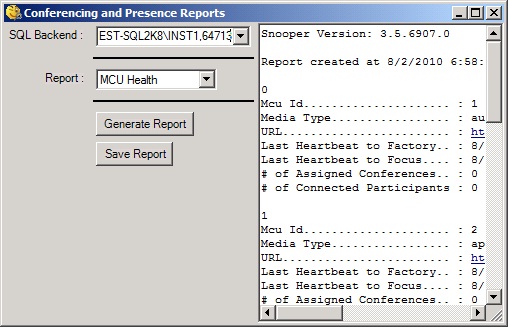
I've tested this in a lab environment and while everything seems to be working correctly with using the <SQL Server>\<Instance>,<Port> format, YMMV, so please test this in a lab environment and make sure that it falls withing the supported configuration guidelines published by Microsoft.